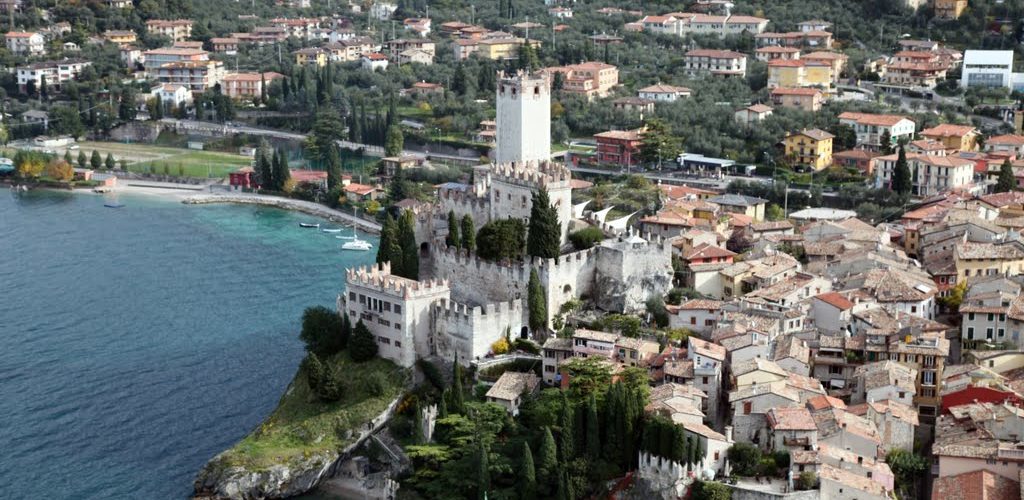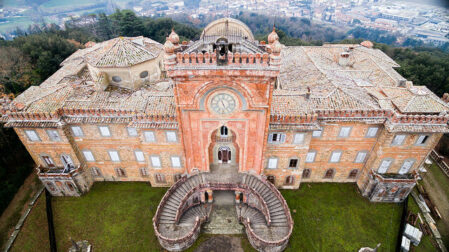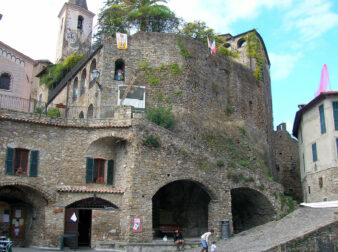Castles in Italy little known: fairytale journey among hidden treasures
READ ME IN  Italiano
Italiano
«Italy is rich in fairytale-like landscapes and, like any respectable fairy tale, it is full of castles that provide the background to fantastic stories. Here is a journey through the most beautiful castles in Italy.»
It is often said that Italy could live on culture alone: Rome, Florence, Turin, Venice, Naples, Palermo are just some of the cities full of wonders, but some of these are often unknown. This is the case of numerous castles in Italy, unknown to most, including the aforementioned Castello di Sammezzano.
Here is a list of some of these…
Castello di Sermoneta
The castle Caetani, located in Sermoneta, is located in Lazio and represents the importance that the defensive walls had in past centuries. Sermoneta is in fact a medieval village with walls, towers and, of course, a castle. Initially belonging to the church, it became the property of the Caetani in 1297. The castle has a structure with ramparts and walking paths and with a wel in the central core; today it is used for conferences and meetings on music, sociology, art and urban planning and is currently open to visitors (every day of the week except Thursday), with its original furnishings and frescos. You find yourself not only in the midst of art, but also among the rooms used to shoot the film Non ci resta che piangere.
Castello di Limatola
One of the most lively castles in Italy. Originally from the 12th century, today it is a restaurant, a hotel and much more. A little further south than the previous one, this castle is located near the Volturno, in the Sannio area (Campania region) and in the same way as the previous one, it was born as a fortress with a defensive purpose, but over time it became a mainly residential structure. Here, too, there are cultural elements: frescoes of liberated Jerusalem, large rooms, optical illusions and much more. The visit is recommended in the winter months, where the Christmas markets take place, this year from November 13th to December 8th.
Castello di Roccascalegna
Located in the province of Chieti, Abruzzo, from the 12th to the 18th century it has undergone several changes to its construction, with new additions to the original defensive structure being carried out. A gutter that was used to collect rainwater, a drawbridge and several very high towers, as well as the walls, configure this castle. A curiosity related to this castle is that from some legends it seems that it was the baron of this structure to apply the ancient practice of Ius primae noctis, so the young bride of a certain territory had the duty to lie with the baron of the castle rather than with her husband. It’s a practice which then spread and that eventually ended with the killing of this same baron by a bride or a groom, disguised as her (the legend is still patchy). According to the legend, during his death, the baron would have placed a bloody hand on a stone that, even today, shows the shape. Legend to which one must choose whether to believe or not: some consider it a practice never realized; others have painted it in their paintings. The photographic contest proposed this year is interesting: it will be necessary to send photos on the theme of the castle indicated by the website, a maximum of three per participant. The winners will be those selected by a jury together with the most voted and they will be exposed at an exhibition from July to September. Here you can find the regulation and photos of the participants.
Castello di Donnafugata
Ragusa, Sicily. This is also a castle that can be visited, and in the meantime, if Sicily is too far away, you can make a virtual tour on the Ragusa municipality website, which includes the exterior, the interiors, the park and the individual rooms. More recent than those mentioned before, it dates back to the late 1800s and was initially inaccessible: some stories of boys and girls who were able to enter through people they knew, tell of spirits that revealed themselves behind newly opened gates, mazes where it was impossible not to get lost. The name of the castle, “donnafugata”, is also interesting and striking. In fact, this refers to a legendary episode in which the fugitive woman would be Queen Bianca of Navarre, remained a widow and a regent, and for this reason she was imprisoned by King Martin I of Aragon, before his escape. This is one of the most beautiful castles in Italy.
Other Castles in Italy
Finally, last but not least, the Castle of the lizard and the Castle of Malcesine must be named. The first is located in Apricale, province of Imperia ( Liguria ) and probably takes its name from the village itself: “Apricale” means “exposed to the sun”, as indeed is every side of the castle exactly like a lizard that is always looking for it. The castle can be visited and is a venue for cultural meetings, it is located on a hill and is home to the museum of the history of Apricale. Dating back to the 10th century, the castle was destroyed and modified several times: one of the two initial towers became a bell tower of the nearby church and then became a private residence. The Castle of Malcesine is located even further north, in Verona (Veneto), near Lake Garda. The castle was built by the Lombards and was the possession of more than 5 different realities, which among other things it was destroyed and rebuilt. Moreover, it owes his fame to the writer Goethe, who describes it and pictures it like an Italian beauty: a museum (among the others present) and a bust inside the castle are dedicated to him. 1902 is an important date for the castle, it’s the year from which it has been considered a national monument.
Gloria Palladino
READ ME IN  Italiano
Italiano




